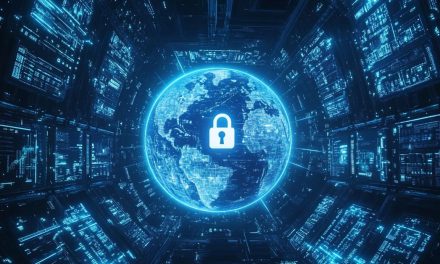The rise of cyber warfare represents a fundamental shift in the nature of international conflict. As of August 28, 2025, cyberspace has been firmly established as the “fifth domain” of warfare, alongside land, sea, air, and space. For nations around the world, including Pakistan, the digital realm is no longer just a space for communication and commerce; it is an active and contested battlefield.
Cyber warfare is the use of cyberattacks by one nation-state to disrupt, damage, or destroy the computer systems and critical infrastructure of another. It is a form of conflict where the weapons are malicious code, the soldiers are elite government-sponsored hackers, and the targets are the very digital foundations of a modern society. This new form of state-on-state aggression has become a primary tool of geopolitical power in the 21st century.
The Weapons of a Digital War
Unlike traditional warfare, cyber warfare is fought with a diverse arsenal of digital weapons, each designed to achieve a specific strategic objective.
Sabotage and Disruption of Critical Infrastructure
This is the most dangerous form of cyber warfare. The goal is to cause real-world, physical damage and chaos by attacking a nation’s critical infrastructure. This can include:
- Attacking the Power Grid: Causing widespread blackouts, as was successfully demonstrated in attacks against Ukraine.
- Disrupting Financial Systems: Triggering a stock market crash or paralyzing a nation’s banking system.
- Paralyzing Transportation and Logistics: As seen in the NotPetya attack, which, while aimed at Ukraine, caused billions in collateral damage to global shipping.
Espionage on a Massive Scale
This is the digital equivalent of traditional spying. State-sponsored hacking groups, known as Advanced Persistent Threats (APTs), infiltrate the networks of foreign governments and corporations to steal:
- State Secrets: Classified government and military documents.
- Military Technology: The designs for advanced weaponry, like fighter jets and missile systems.
- Economic Intelligence: Sensitive trade negotiation documents and proprietary corporate technology. The SolarWinds campaign is a prime example of a massive, successful cyber-espionage operation.
Information Warfare and Propaganda
This is the battle for hearts and minds. Nation-states use their cyber capabilities to conduct sophisticated influence operations designed to destabilize their adversaries from within. This includes:
- Spreading Disinformation: Using social media bot armies to spread fake news and amplify divisive social and political issues.
- Interfering in Elections: Hacking and leaking the emails of political candidates or targeting voter registration systems to erode trust in the democratic process.
- Psychological Operations: Sowing discord and panic among a civilian population.
The Major Players and Their Arenas
While many countries possess offensive cyber capabilities, a handful of nations are recognized as the dominant players on this new battlefield.
- Russia: Often associated with disruptive attacks on critical infrastructure and sophisticated disinformation campaigns.
- China: Widely known for its large-scale economic espionage and intellectual property theft.
- United States: Possesses some of the most advanced offensive capabilities in the world, as demonstrated by the Stuxnet worm.
- Iran: Known for its aggressive and often destructive “wiper” malware attacks.
- North Korea: Engages in a mix of disruptive attacks and large-scale financial crime to fund its regime.
The arenas for this conflict are global. Tensions between the U.S. and China play out in cyberspace through espionage, while the conflict in Ukraine has been accompanied by a parallel and relentless cyber war. Here in South Asia, the long-standing geopolitical rivalry between Pakistan and India has a significant and active cyber dimension, with both sides regularly engaging in espionage and hacktivist-style attacks against each other’s government and military infrastructure.
The ‘Gray Zone’ of Conflict: Why It’s So Dangerous
Cyber warfare is particularly dangerous because it operates in a legal and diplomatic “gray zone.”
- The Problem of Attribution: It is incredibly difficult to definitively and publicly prove which nation was behind a specific attack. The use of proxy servers and complex hacking infrastructure allows for a high degree of plausible deniability.
- Lack of Clear “Red Lines”: The international community has yet to agree on clear rules of engagement for cyberspace. What constitutes an act of war? When is a retaliatory strike justified? This ambiguity creates a high risk of miscalculation and escalation.
- Asymmetric Power: Cyber weapons give smaller nations the ability to inflict significant damage on much larger, more powerful adversaries, leveling the playing field in a way that is not possible with conventional military force.





